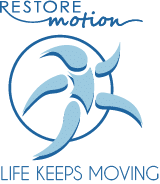We love our kids. We love them enough to go through all the difficulties of pregnancy, labor, and childbirth, and we keep loving them for the rest of our lives once they enter the world.
That doesn’t mean we love what pregnancy and the birthing process does to our bodies. It’s a testament to the power of a mother’s love that we don’t look sideways at our little angels when postpartum peezes (pee-sneezes), itching, and stiffness take hold––because really, we know it’s not their fault!
Still, a lot of new moms or moms-to-be face significant hurdles when it comes to healing after they’ve given birth. If you’re one of these moms, you may worry about some of the changes and potential problems you’ve started experiencing during the perinatal (immediately before and after labor) phase.
“The fourth trimester” is the 12-week period immediately after you have had your baby. Not everyone has heard of it, but every mother and their newborn baby will go through it. It’s a time of great physical and emotional change as your baby adjusts to being outside the womb, and you adjust to your new life as a bona-fide Mom. Giving birth is as incredible as it is challenging, and giving yourself the tools and time to restore your nutrient levels, hormones, muscles and everything else is going to affect how you experience the early days of motherhood.
As perinatal mobility expert Kristina Hsieh, P.T., said during Restore Motion’s Strong As A Mother Workshop, “as a society, we tend to do a poor job of telling mothers exactly what to expect before and after they deliver.”
We’re hoping to help change that trend––and maybe we’ll help you find a way to escape those dreaded peezes!
From Well Rounded To Well Grounded––How Pregnancy Affects Your Mobility From Head To Toe
Mobility is a term that refers to a lot of different factors, all of which relate to one’s ability to “move and be moved freely and easily.” These factors can be internal––relating to the organs or musculoskeletal system––or they can be external, impacting our flexibility, potential for injury, and ability to engage in normal activities like running or hiking.
Pregnancy is a complex process that takes place across nearly every system in the body. Creating, sustaining, and giving birth to a child is an incredibly delicate dance that relies on collaboration between many different parts.
Since these parts are all intimately connected, it’s no wonder that many issues with mobility during and after pregnancy have their origin in less-than-obvious places.
For example, as you get close to term, your pelvis begins to shift as your uterus expands and prepares for the birthing process. This can cause pain in your lower back, your perineum (or “pelvic floor,” the group of muscles that extends from the front of your pubic area to your tailbone), or even your thighs, and it also brings on cramps that feel similar to the kind you get while on your period. This common symptom is called pregnancy-related pelvic girdle pain (PGP) or symphysis pubis dysfunction (SPD).
This pain can curb your mobility and make certain activities––such as getting dressed or going to the bathroom––quite difficult. It doesn’t stop there.
Any kind of pain, especially pain that impacts your core and pelvic muscles, not only limits mobility but also saps a great deal of energy and mental stamina. This can be seen in broader studies done on women who have chronic pelvic pain or CPP. While you’re going through this pain, you’re likely to feel lethargic, irritable, and less inclined to face the day’s ups and downs with grace (to put it nicely).
This is normal, and it’s important to respect your body and listen to the advice of your doctors, including a qualified physical therapist. They can advise you on ways to maintain stability, lessen the pain, and make the whole experience easier for you. Bear in mind that pain, especially pain that impacts your overall mobility, brings increased risks for injury and accidents.
Pregnancy comes with other kinds of discomfort, too, as anyone who’s been pregnant before can tell you. Generalized back pain, bladder discomfort, nausea, stiffness in the hips and legs, and many other symptoms all limit mobility and impact numerous systems outside of your reproductive organs.
Due to the nature of pregnancy, no symptom lives in isolation. You should consider each one as part of a larger picture of what your body is doing and preparing to do, and consult an expert regarding ways to make the process easier, more comfortable, and less overwhelming.
There are many factors to consider when speaking to this expert. For example:
- Breast feeding may contribute to postpartum weight loss, but not all nursing mothers have the same outcome.
- Relaxin is the hormone responsible for increasing the elasticity and size of connective tissues – ligaments and muscles––and production of this hormone increases during pregnancy (especially as you prepare to give birth.
In practice, these factors will play an important role when you are personalizing your routine. If you find yourself losing weight or you have a history of being underweight, for example, you’ll need to be especially careful when designing a diet and exercise routine. Becoming underweight could seriously impact the quality of your breastmilk and will cause dips in energy, endurance, and your ability to heal from injuries.
At the same time, it is not advised to go right into your pre- baby high intensity workouts of activities. Relaxin can alter your body’s proprioception and risk of injury due to unstable joints. Muscles must be properly “rehabbed” and strengthened after a delivery.
Taken together, your P.T. may design a gentler, more gradual routine for you than you might have expected, and you’ll need to trust their judgment and remain informed about the subtler changes happening all across your body. A safe, effective exercise routine and other effective methods will be vital as you attempt to improve and preserve your long term mobility.
Ups, Downs, Sideways, And More––Optimizing Mobility Before After You Give Birth
Since the hips and pelvis are the most immediate priorities before and during labor, these areas tend to be the focus of prenatal exercise classes and other prenatal fitness programs. There is also a great deal of emphasis on proper breathingThe pelvic floor muscles and diaphragm muscle work together to maintain continence and postural stability. Breathing exercises and awareness of how the pelvic floor and diaphragm work together can help the labor and delivery process., pain monitoring, and other kinds of bodily awareness that can help women spot potential problems and strengthen their overall resilience.
These types of programs are vital, and they should indeed be prioritized as you move closer to your due date. A good prenatal exercise program may be led by a qualified yoga, pilates, or other trainer with advanced training in perinatal exercise (not necessarily a P.T.), a it will include a variety of exercises involving plenty of different types of equipment (such as an exercise ball or roller). The program’s leaders will make great effort to ensure a relaxed, enjoyable atmosphere that both supports you and keeps you accountable as you work toward your fitness goals.
The main focus of most prenatal exercise programs is flexibility and targeted strength training for your pelvic and hip muscles. This type of work creates balanced muscles by prioritizing both flexibility and strength, which in turn allows your body to move and function better as an integrated whole.
The stretches are likely to be slow and gentle, and most therapists will avoid routines that increase your heart rate above a certain level. Seated or standing yoga exercises, or exercises that have you laying on your side, are popular in these classes.
Gentle pilates that avoids supine positioning is especially helpful, as it can increase flexibility and strength at the same time. This kind of exercise also teaches you strong breathing techniques and enhances your overall bodily awareness. Yoga is excellent for achieving noticeable results in a short amount of time and is also variable enough that the same routines can be adapted to multiple trimesters and phases of healing.
Whatever programs you choose, just make sure to take things “slow and steady” as you rediscover your body and the baby’s new limits. You probably won’t be able to work out as intensely as you could before the pregnancy (nor should you ever attempt to).
When talking with a physical therapist, ask detailed questions and help them cater an exercise routine to your specific needs. If you find that your pain is focused more in your glutes than your lower back, for example, it might be helpful to develop a routine that emphasizes your piriformis muscle rather than your obliques.
At the same time, don’t neglect the rest of your body in favor of these common target areas. Yes, certain bones, muscles, and systems will play a more direct role in the perinatal process, but that doesn’t mean you should allow your legs, arms, or upper body to deteriorate. A good physical therapist will incorporate these other areas into your routine and advise you on ways to keep them strong and healthy throughout your pre- and post-birth experience.
If you have access to the right resources, your therapist may advise exercise such as swimming, low-impact aerobics, or monitored use of a stationary bike. They will also tell you which activities to avoid, which can be equally if not more important to your overall experience.
One of the best parts of exercise is its ability to empower you. As you experience this unique phase of life, a good routine can help you to feel confident in your fitness, strength, and ability to handle everything that awaits you and your baby.
Concluding Thoughts––Personalize Your Mobility By Working With Your Own Unique Body, And Don’t Forget Your Mental Health, Either
Whether you’re tightening your pelvic muscles to avoid those infamous peezes, stretching out your hips and lower spine, or developing a truly holistic approach to your perinatal mobility, it’s important to remember that you know your body best.
While developing your routines, don’t be afraid to change things up and state your opinion about what’s working and what isn’t. A physical therapist––especially one specializing in working with new or prospective mothers––isn’t there to boss you around and tell you what to do. Their job is to work with you, to listen carefully, and to guide you as you figure out what your body and your baby need to stay mobile and healthy.
Along with all of this, you should incorporate mental health into your physical routines. In some ways, this is the most important and the most neglected aspect of your present and future mobility.
The mind is our body’s farthest-reaching system, and the way you treat your mental health throughout the many phases of pregnancy will determine not only how you handle this nine-month process, but also how you recover once it’s complete. You’re about to undergo some life and body-altering changes, and you and your partner deserve to feel supported as you deal with that. Anxiety and postpartum depression are common in both mothers and fathers alike––and that’s nothing to be ashamed of.
All in all, pregnancy and postpartum life are a marathon, not a sprint. Each step of the journey should be taken with confidence.
Finally, you should work with someone who teaches you to listen to your body and to trust it––because when it’s finally time to bring that new face into the world, it’s going to be you and you alone at the center of that incredible, miraculous experience.


